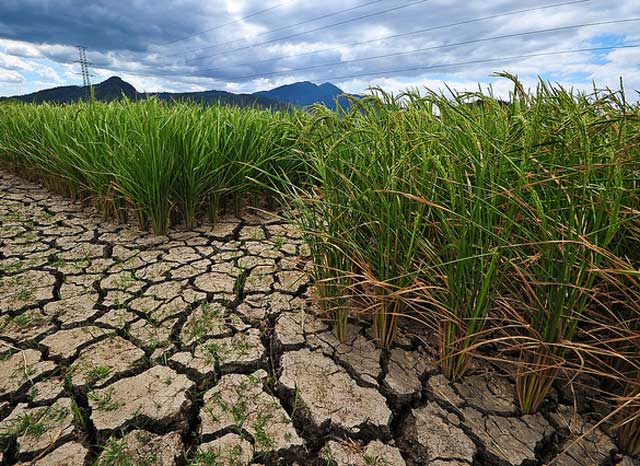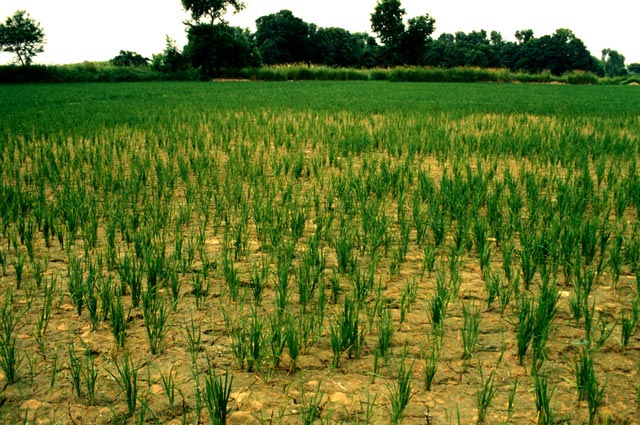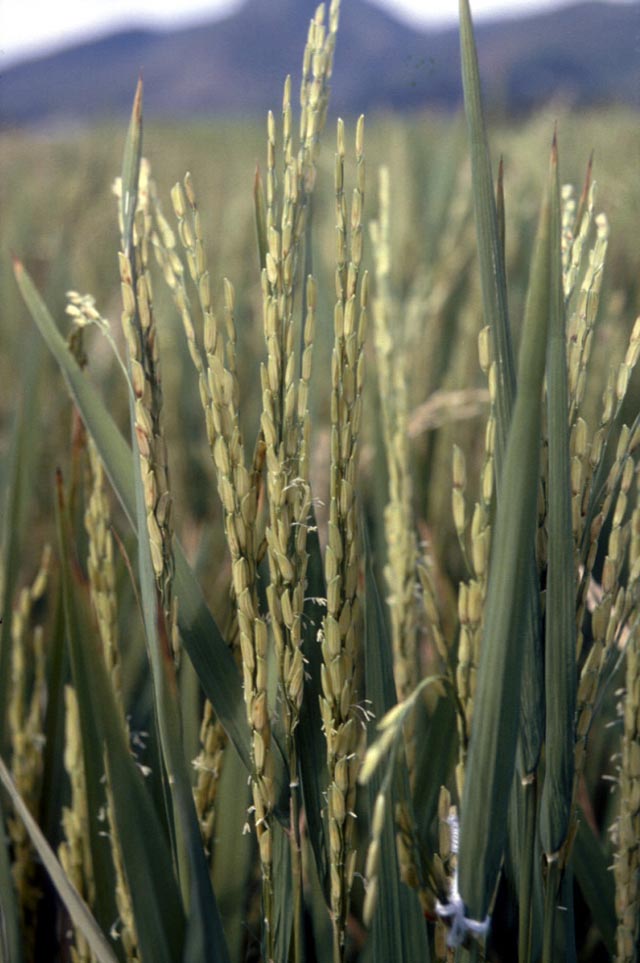Drought
What it does
 When plants experience drought, it has less ability to extract nutrients from the soil.
When plants experience drought, it has less ability to extract nutrients from the soil.
Why and where it occurs
Water stress is a problem in rainfed areas with poor rainfall distribution or within irrigated areas with poor water delivery. Permeable soils (i.e., high infiltration rates) and soils with low moisture retention increase the probability of water stress. Poorly leveled fields often result in patches of higher soil with water stress. It is most critical around flowering (from three weeks before flowering up to one week after anthesis).
How to identify
Rice fields affected by drought or water stress have:
- stunted plants
- rolled leaves
- delayed flowering
- burned tip
- naturally drying (senescence) leaves
- whitehead (but the tiller will still be attached to the stem)
Drought symptoms can be confused with Nitrogen deficiency and high spots in the field. To confirm the cause of problem, check the field and/or ask the farmer about weather conditions. Also check for high spots in field or soil cracking.
Why is it important
Water stress is a major source of yield and economic loss in rice production throughout Asia. As soon as fields drop below saturation, yield potential, in most cases is being lost. The exception is with some varieties of aerobic rice being grown in parts of China and Brazil.
How to manage
- Reduce water stress.
Ensure fields are well-leveled, choose an appropriate cultivar and planting date that increases the probability of moisture being available during the critical flowering period. - When possible, identify periods of probable moisture stress, and avoid these periods









